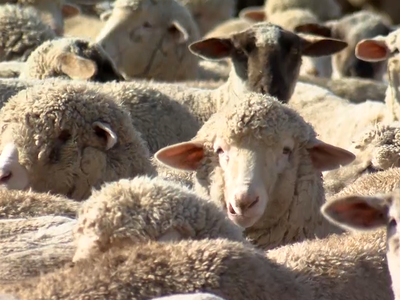Moose in my yard
When a moose shows up in your yard, give it space. Take photos through the window to capture the moment...it may never happen again. Don't approach the moose, as your presence could agitate it. The moose will likely leave shortly after giving you a free tree pruning.Moose are the largest members of the deer family. Adult males (bulls) can weigh up to 1000 pounds and stand about six feet at the shoulder. For their size they are incredibly fast and agile. Moose vary in color from light brown to black. They have a large head and long snout that makes them look somewhat unique and easy to identify. They occupy various habitats throughout the state, from the thick conifer forest of northern Idaho to the sagebrush of southern Idaho. A very large body mass enables moose to stay at high elevations in extremely deep snow when deer and elk must migrate to lower elevations.
Although moose can live in any weather conditions found in Idaho, it is not at all unusual for a moose to wander into a town or residential area. Ornamental trees and shrubs are tasty treats to a moose, just as ice cream is to a person. When a person heads to an ice cream shop, it isn't because there is no food whatsoever at home. People go to the ice cream shop because a cone tastes good. When a moose wanders into town, it doesn't mean that there is no food out in the wild. They wander into town because there is tasty food there that is easy to access. Unlike deer and elk, moose are not particularly wary of people. When a moose comes into town or a residential neighborhood, it will typically hang around for a few days and then move on. Depending upon the person who sees the moose, it can bring excitement and joy; or, it can cause concern and fear.
In early November, there were three moose in Post Falls that people called Idaho Fish and Game to report. A cow and calf were spotted together in one neighborhood, and a young bull was reported elsewhere in town. Some callers wanted the moose captured and moved. Other callers were thrilled to see the moose, and they specifically asked that the moose not be removed. The approach Fish and Game prefers to take is to give a moose a few days to leave on its own. In most cases, that is what happens. Moose wander into town and in a few days typically leave with only tracks, some droppings, and a few chewed up branches to show they were there.
A moose in town is not a cause for alarm. A moose left alone and given space can be fun to watch and photograph from a distance. If a person gets too close, a moose can become agitated and aggressive. A moose that wears out its welcome over time may need to be moved as a last resort. As one might imagine, moving an animal that weighs up to a thousand pounds is not an easy task. And moving a moose does not come without risks to the moose... and to people. To administer the drugs that are used to tranquilize a moose, extensive specialized training is needed. Fish and Game can only train a few staff in each region. To move a moose, one of these highly trained employees must be available on site. A tranquilized adult moose must be rolled onto a special heavy tarp with 16 nylon strap handles. Eight people are needed to lift and carry the moose to a specially modified horse trailer (which must also be in the area at the time). A syringe containing powerful narcotic drugs is loaded in a projectile and shot from a firearm to immobilize a moose. If everything goes perfectly, the moose is loaded up and hauled out of town in the trailer. A reversal drug is administered and the moose is released.














